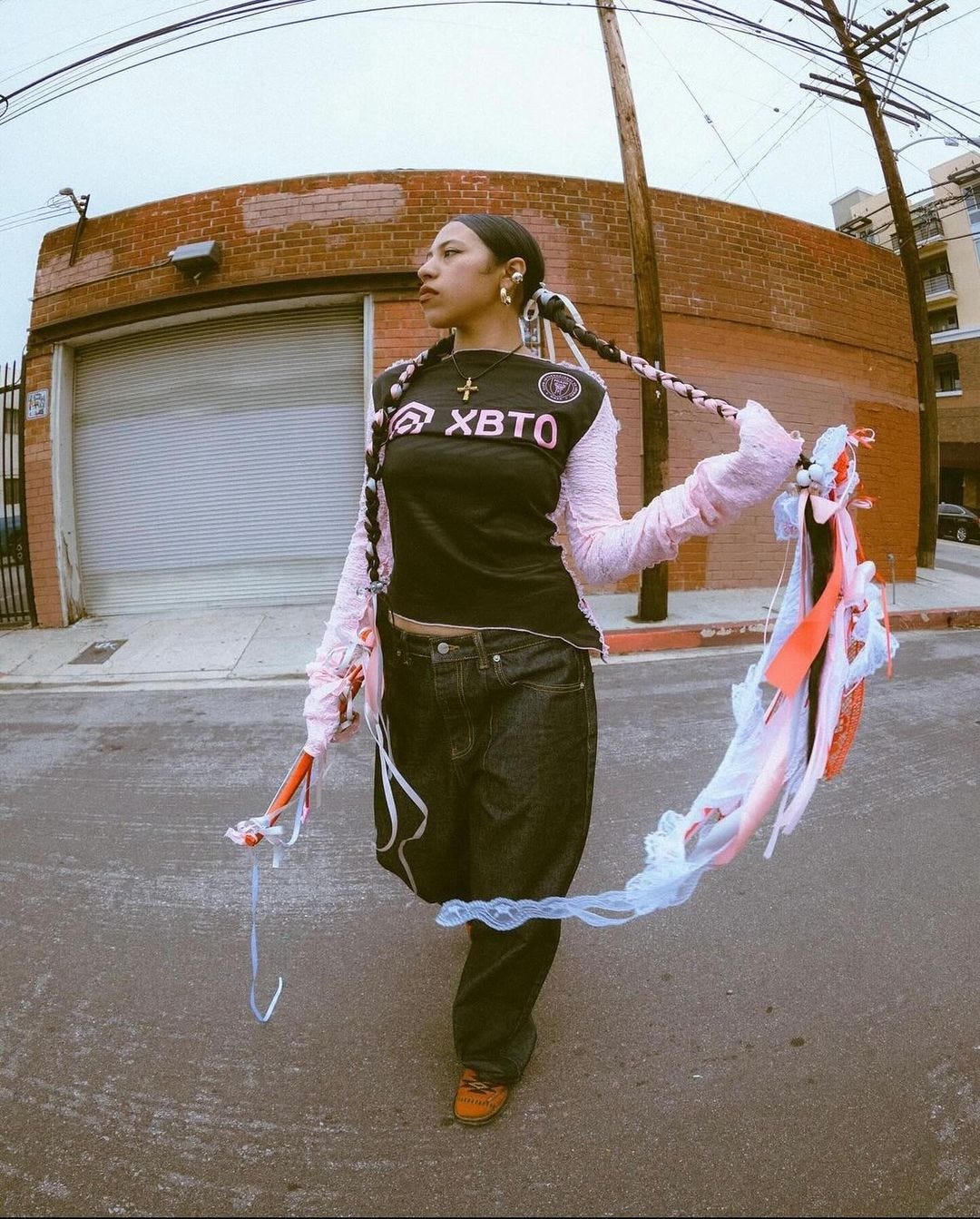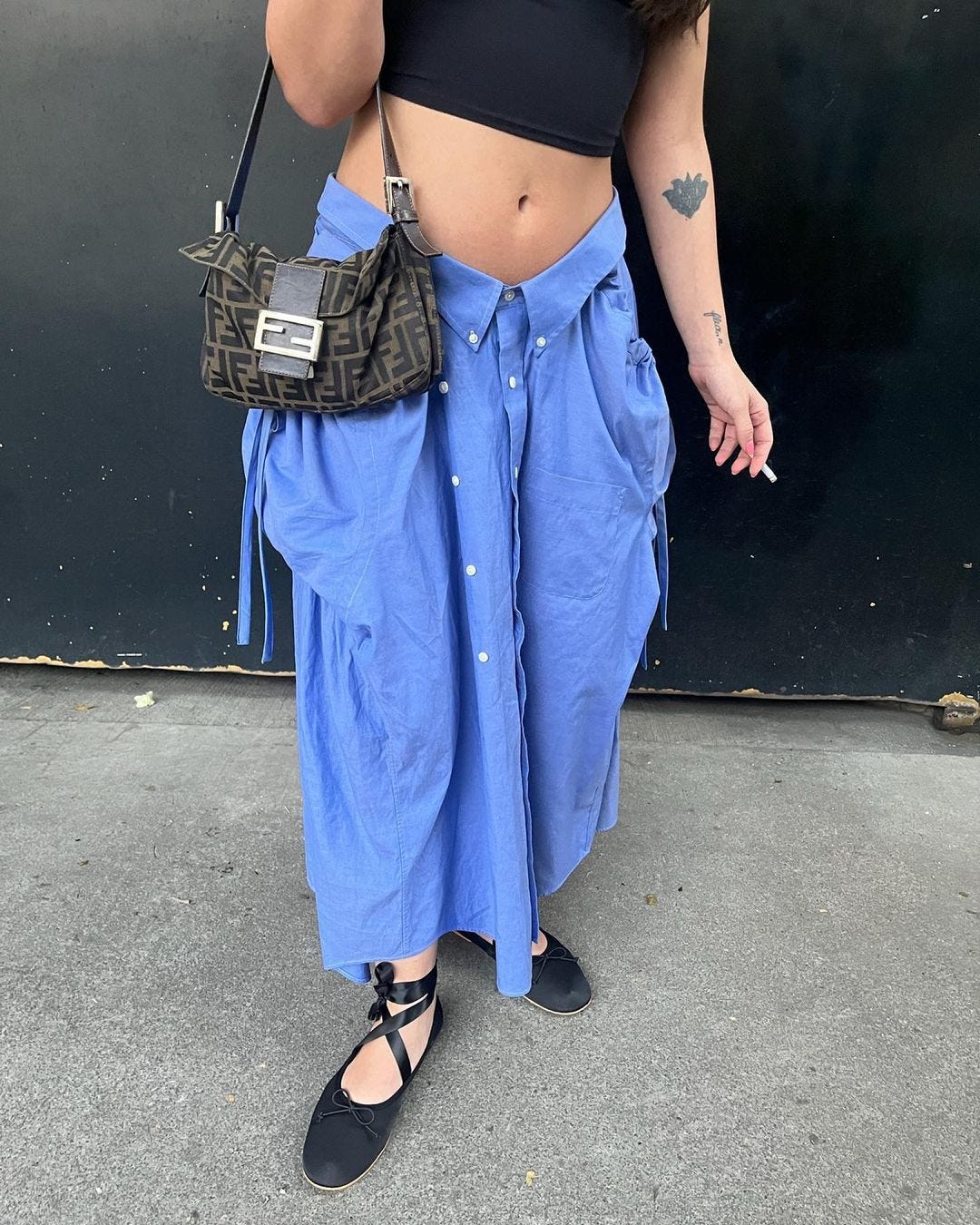Happy belated Earth Day! As some of you may know, I not only run this hyper-niche indie blog known to only the coolest of internet dwellers, but I’m also a staff writer at the sustainable fashion platform Sustainable Baddie. I'm very grateful to call myself a staff writer, and one of the coolest parts of the job is the opportunity to connect with incredible people and brands in the sustainable fashion space. Working in sustainable fashion often awakens the two wolves inside of me *PICK UP ON IRONY N WIT HERE*. On one hand, I adore fashion months and the creativity they unleash, inspiring us to reimagine how we decorate our physical vessels. On the other hand, I'm frightened by the pace of the industry.
As I age, the feeling of time passing feels faster than ever before. The months between Spring/Summer fashion month in September and Fall/Winter in February feel like an unfair pressure to expect designers to churn out entirely new collections. It’s a sentiment I touched on in my Who Is Chopova Lowena? post. I appreciate their showing format, one show and one lookbook a year, which prioritizes creativity and doesn’t demonize slowing down in the fashion industry. The bi-annual cycle of collections (further fragmented into various sub-collections like resort wear, transitional season wear, formal wear, bridal wear, and all of the possible weather conditions and occasions that could call for a new collection, and of course the horrifying speed at which fast fashion has conditioned us to change our interests). Like many slow-fashion girlies, I often find myself caught up in thoughts of "what's next?" Not in terms of trends, but in how we sustain the art of fashion while honoring our earth.
I've had this realization for a while now, but attending two events this month cemented my outlook on the future of fashion, both in terms of production and style. It's a future I see as achievable only through a process of rebirth.
On the 21st, I attended By Liv Handmade’s Reworked Runway show, which surprised me by not being a traditional runway but a gorgeous display of reworked fashion in motion. One thing I've come to appreciate from my experiences at New York Fashion Week is the art of fashion performance. At Reworked Runway, nine emerging sustainable designers narrated the story of clothing through dance and soundscape. As I watched the fabric move and the dancers embody the essence of each collection, it was evident that these garments had a history, a previous life—they had been worn and experienced. The show began with a voice reminiscent of a news reporter, hinting at the future of fashion being about repurposing what we already have to create something new.
In my work, I encounter so many talented designers who excel at creating using existing materials. Upcycled fashion can resemble a patchwork community of fabrics that might never have come together otherwise, as seen in the work of designers like Hood Baby LA or Psychic Outlaw. It can also be completely coherent, like in the designs of Estudio 1999 and Banzo. I have a huge respect for designers who breathe new life into existing materials—big kisses for you! The truth is, we don't always need to create something entirely new. I know there are many things in the way of this becoming the norm, the biggest being good ol’ capitalism and corporate greed. Yet, it's entirely possible and within reach. Fashion, like the moon, must undergo cycles of death and rebirth to evolve.
On Earth Day, I attended a panel on biofabrication by The Standard x Biofabricate. The panel featured Collina Strada founder and creative director Hillary Taymour, Alison Cutlan of The Rootist, and Uyen Tran of TômTex. Taymour discussed her involvement in efforts in Accra, Ghana (the site of the world's largest secondhand clothing market, whose unusable overflow creates massive landfills and threats to public health) to turn the tons and tons of clothing that lands on their shores into material that can be used in housing construction, such as insulation or fill for things like mattresses and pillows. There is so much discarded clothing on earth that we can even use it to build housing for each other. Nothing new ever needs to be made again. Up/recycling is a practice that any industry could benefit from, and I can't wait for the day when it's normalized.
Because I can’t kiss every upcycler in the world (on the lips), I transformed this kiss into a list of ten upcycle artists you should know and support: read here.






